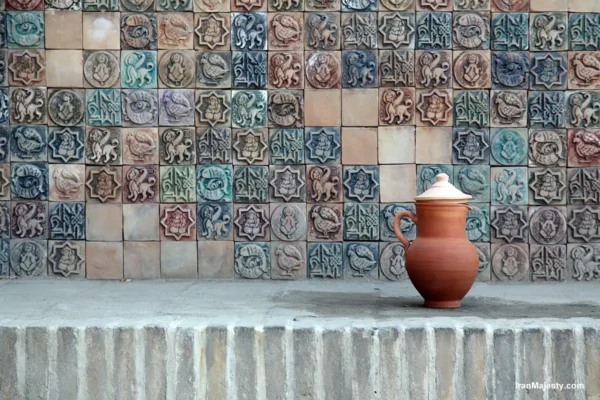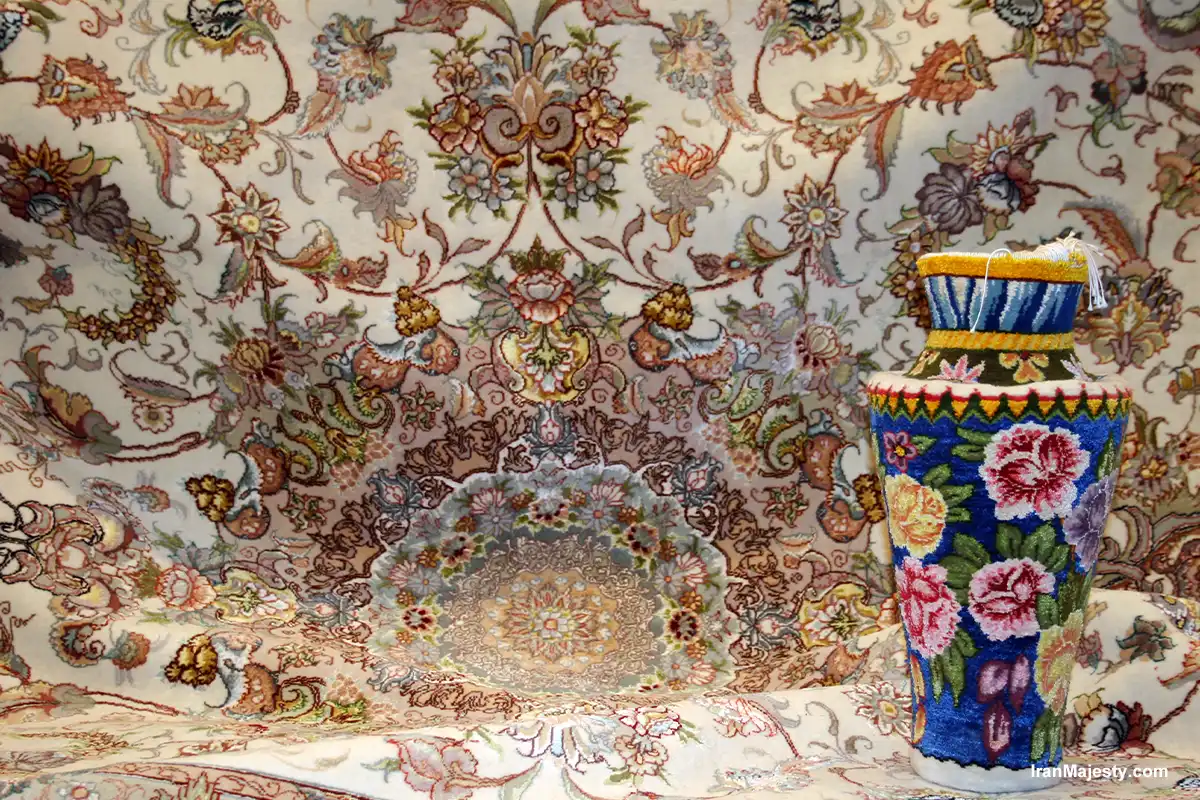Iran is a shopper’s paradise, rich in traditional crafts, unique foods, and one-of-a-kind items you won’t find elsewhere. From intricate Persian carpets to delicious local sweets, there are countless treasures that reflect Iran’s deep cultural heritage. In this guide, we’ll explore the must-have items to buy when you visit Iran, perfect for taking home as souvenirs or gifts.
Persian Carpets and Rugs
Persian carpets are famous around the world for their beauty, quality, and craftsmanship. Handwoven from silk, wool, or cotton, these carpets can be found in vibrant colors with intricate patterns that often depict stories, animals, and nature. Cities like Tabriz, Isfahan, and Kashan are renowned for their rug-making traditions, each offering distinct designs and styles.
- Tips for buying: Look for carpets with high knot counts, as these are more durable and valuable. Don’t hesitate to ask about the origin of the carpet, as different regions have their own unique styles.
Handcrafted Jewelry
Iranian jewelry, especially that made in cities like Mashhad and Yazd, is well known for its quality and elegance. Many pieces feature turquoise, sourced from the turquoise mines of Neyshabur, which is considered some of the best in the world. You’ll also find stunning silver and gold jewelry, often decorated with intricate designs and Persian motifs.
- Tips for buying: Always ask about the origin of stones and metals used, and choose designs that represent Iranian culture, like miniatures of traditional Persian patterns.
Saffron
Known as “red gold,” Iranian saffron is considered the best in the world for its vibrant color, rich aroma, and powerful taste. Iran produces over 90% of the world’s saffron, primarily grown in the northeastern region. Saffron makes an ideal gift for cooking enthusiasts, adding a special touch to dishes, desserts, and tea.
- Tips for buying: Look for deep red, brittle threads that give off a strong aroma. Avoid powdered saffron, as it may be mixed with other substances.
Persian Miniatures
Persian miniatures are beautiful, hand-painted illustrations often inspired by Persian poetry, mythology, and literature. Created on canvas, wood, or even as jewelry, these works of art are usually detailed with vibrant colors and showcase scenes from ancient Persian tales.
- Tips for buying: Miniatures vary in size and price, so you can find something that fits your budget. Look for miniatures with complex details, as these typically represent the best quality.
Termeh Fabric
Termeh is a luxurious handwoven fabric made from silk and wool, often decorated with intricate floral patterns and paisley designs. Originating from Yazd, termeh has been a part of Persian culture for centuries and is often used for special occasions, including weddings and celebrations.
- Tips for buying: Termeh is perfect for tablecloths, cushion covers, or as a unique wall hanging. Look for pieces with vibrant colors and tight weaving.
Iranian Ceramics and Pottery
Iran has a rich history of pottery and ceramics dating back thousands of years. Each region has its own style, from the famous blue and white ceramics of Kashan to the elaborate patterns found in Tabriz. Iranian pottery often features floral motifs, geometric shapes, and traditional Persian designs.
- Tips for buying: Look for handcrafted items rather than mass-produced ones, as these are more valuable and better represent Iran’s artistic heritage.

Rose Water and Herbal Distillates
Iran is famous for its herbal distillates and rose water, especially those made in the city of Kashan. Rose water is a staple in Iranian cuisine and is also used in cosmetics and aromatherapy. You can also find herbal distillates, such as mint, chamomile, and thyme, which are traditionally used for medicinal purposes.
- Tips for buying: Ensure the product is pure and sourced directly from reputable shops. Rose water with a strong scent is ideal for cooking or skincare.
Gaz and Sweets
Iranian sweets, especially gaz and sohan, make perfect souvenirs. Gaz is a soft nougat from Isfahan made with pistachios and flavored with rose water. Sohan, a brittle saffron toffee from Qom, is also popular among locals and tourists alike. These sweets are delicious reminders of Iran’s culinary heritage.
- Tips for buying: Look for fresh products in sealed packages, as these will last longer. Sweets like gaz and sohan are also widely available in airport shops.
Spices and Dried Fruits
Iran is known for its flavorful spices, including barberries, cardamom, sumac, and dried limes. These spices are often used in Persian cooking, adding a distinct flavor to traditional dishes. Iran is also famous for its dried fruits and nuts, particularly pistachios, which are highly sought after worldwide.
- Tips for buying: Purchase spices and dried fruits from bazaars or specialty stores. Make sure they are stored in airtight packaging to preserve their freshness.
Khatamkari (Inlay Work)
Khatamkari, or Persian marquetry, is a traditional form of inlay work that involves fitting together pieces of wood, metal, and bone to create intricate designs. This art form is used to decorate everything from jewelry boxes to picture frames and chess boards.
- Tips for buying: Look for high-quality pieces with even, detailed patterns. Khatamkari items make beautiful and unique gifts for friends or family.
“Here’s a fantastic video on Top Souvenirs to Bring Home from Iran: Famous Things to Buy by To Iran Tour Tour Operator. We’ve embedding it to provide you with additional context, with full appreciation for the creator’s efforts.”
Why You Should Travel to Iran
Iran offers an incredible shopping experience, especially for those interested in unique, high-quality handicrafts and culinary items. From the vibrant bazaars filled with handwoven carpets and exquisite jewelry to the aromatic spices and sweets, Iran’s markets offer something for every traveler. Shopping in Iran is more than just a transaction; it’s a way to connect with the culture, learn about its history, and bring a piece of Iran back home with you.
Footnote: If you enjoyed this list of Iranian souvenirs, feel free to leave a comment below with any questions or experiences you’d like to share. Don’t forget to share this article with others interested in discovering Iran’s culture and treasures!


0 Comments